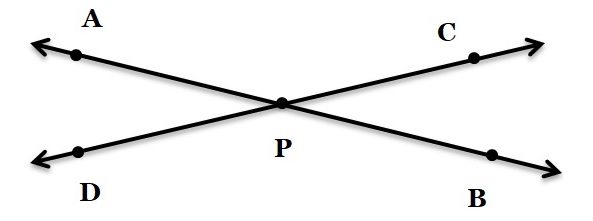Table of Contents
The line originates when the two planes meet, here we will learn about all types of lines. The line indicates the expansion of the surface.
Contextually, lines and line segments are not one. Some basic differences can be noticed between them, for example
- The line can be extended as much as you want on both sides That is, the line is infinite But the line segment is only a part of the line That is, the segment is finite.
- In geometry, line segments are drawn, not lines.
Definition of Line
A geometric figure that has a length but a negligible width is called a line.
Types of Lines
There are two types of lines, namely – Straight line, Curve

Straight Line
A line that does not change direction when moving from one end to the other is called a straight line. Such as – scale edge, table edge etc.
Types of Straight Lines

Equilateral Straight Line
If two or more straight lines are on the same plane, then the straight lines are called Equilateral straight lines.
Parallel Straight Line
If two or more straight lines on the same plane do not intersect as they extend in both directions, they are called parallel straight lines.

The Condition that two Straight Lines are Parallel
1. The two straight lines must be on the same plane.
2. The perpendicular distances of the two straight lines will always be the same.
Intersecting Straight Line
If two or more straight lines in the same plane intersect, they are called intersecting straight lines.

Asymmetrical Straight Lines
If two or more straight lines cannot be joined by a single plane, then those straight lines are called asymmetrical straight lines.
Playfair’s axiom
Two intersecting straight lines can never be parallel to another straight line.

Curve
A line that changes direction when moving from one end to the other is called a curve. For example – the line along the surface of the football.

Ray
A line that has one end fixed and the other wide without changing direction is called a ray.

Line Segment
A certain part of any line is called a segment.

The similarity of Straight Line and Curve
| Straight line | Curve |
| Numerous straight lines can be drawn with one point | Numerous curves can be drawn with one point |
| The distances of two parallel straight lines are always equal | The distances of two parallel curves are always equal |
| A plane can have numerous straight lines | A plane can have numerous curves |
The difference between a Straight Line and a Curve
| A straight line can be drawn with only two points. | Drawing a curve requires at least three points. |
| The two intersecting straight lines intersect at a point. | The two intersecting curves intersect each other at innumerable points. |
| The straight line does not change direction when extended. | The direction changes as the curve increases. |
| The straight line must be on one plane. | But the curve may not be on a plane. |
| No part of the plane can be bounded by one or two straight lines. | Any part of the plane can be bounded by a single curve. |
Relationship between Straight Line and Plane
The two planes always intersect in a straight line. Again numerous straight lines can be inserted side by side to form a plane. If two points are in a plane, then the straight line connecting the two points will be in the same plane.
[WpProQuiz 3]
Geometric Shapes |
Surface |


